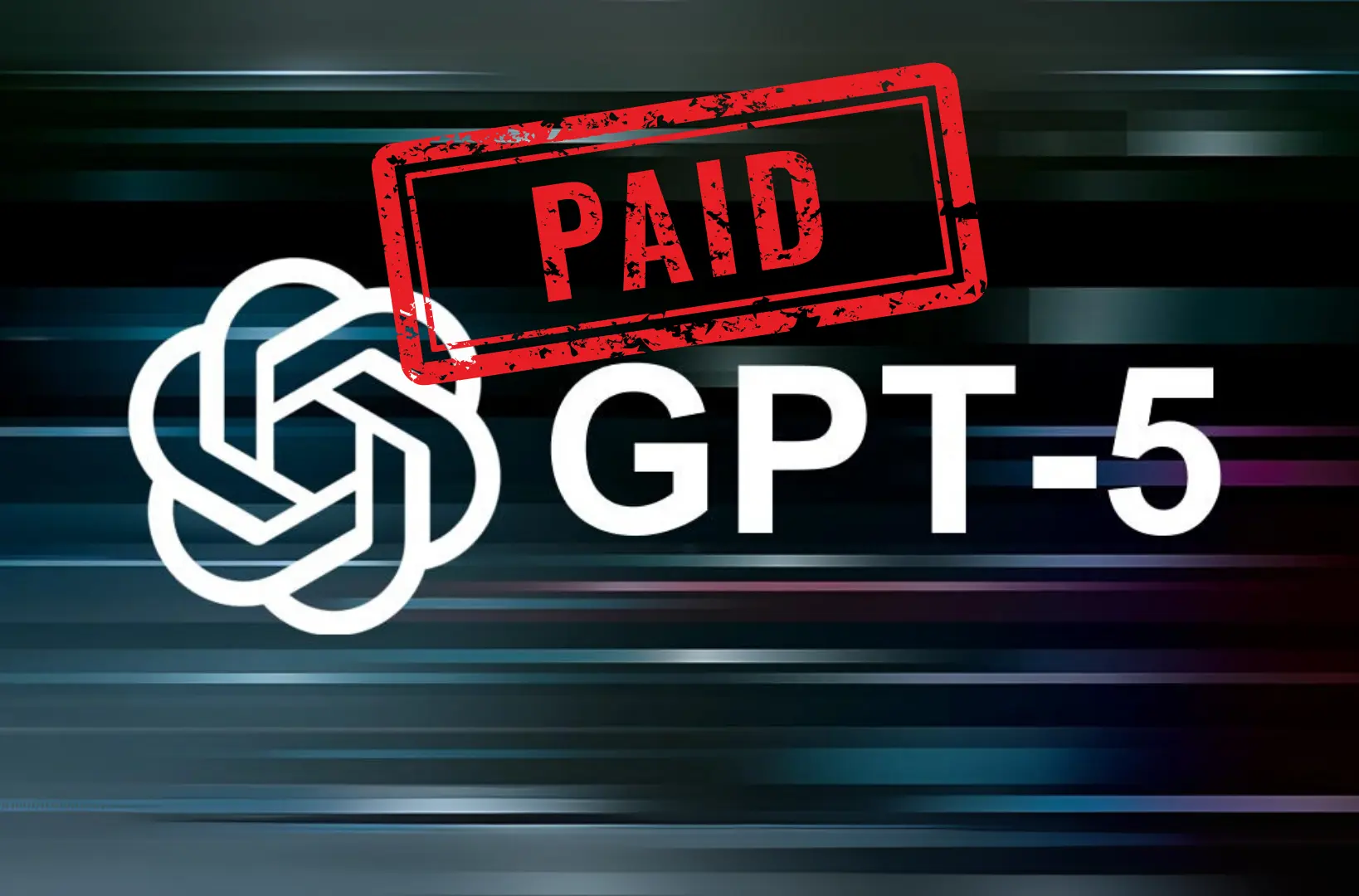OpenAI is once again pushing the boundaries of artificial intelligence, but this time, access to its most advanced capabilities might come at a premium. Sam Altman, OpenAI’s CEO, has confirmed that while GPT-5 will introduce groundbreaking improvements in reasoning, context retention, and creativity, unlocking its ‘higher’ intelligence levels will require a paid subscription.
This move signals a shift in how AI models are being commercialized, raising questions about accessibility, ethical concerns, and the impact on businesses relying on AI. Will this create an AI divide between free and premium users? And what exactly do these ‘higher’ intelligence levels entail?
Let’s dive into what Altman’s confirmation means for the future of AI and how it might shape the way we interact with intelligent systems.
A New Era of AI Intelligence
What Makes GPT-5 Different?
OpenAI has continuously advanced its AI models, with each iteration bringing substantial improvements. GPT-3 laid the foundation, GPT-4 expanded its abilities, and now GPT-5 is poised to break new ground. According to Sam Altman, GPT-5 will feature “higher” intelligence levels, offering unprecedented advancements in reasoning, context retention, and creative problem-solving.
This new AI model promises to revolutionize industries ranging from healthcare to cybersecurity by delivering more nuanced insights, solving complex problems, and engaging in long-term conversations that feel remarkably human-like. However, these capabilities won’t be available to all users—GPT-5’s premium features will come at a cost.
The Premium AI Experience: Unlocking Higher Intelligence
While GPT-5 will likely retain the core features accessible to existing GPT models, unlocking its full potential—such as enhanced reasoning abilities and contextual awareness—will require a subscription. This move is part of OpenAI’s strategy to ensure continued development and monetization of its models.
But what does this mean for users? Let’s explore the pros and cons of this new paywall.
The Paywall: A Double-Edged Sword
The AI Divide: Will Paid Access Create Inequality?
One of the most pressing concerns surrounding OpenAI’s subscription model is the potential for an “AI divide.” If the most advanced features of GPT-5 are locked behind a paywall, there is a risk that only those with financial resources will have access to these capabilities.
This could lead to disparities in how AI is utilized across different sectors. Smaller businesses, individual developers, and everyday users may be left behind, unable to afford the premium tier. At the same time, large corporations with deep pockets will likely benefit from cutting-edge AI tools, gaining a competitive advantage.
Balancing Accessibility with Commercialization
OpenAI has always emphasized its mission to democratize AI, ensuring that powerful tools are available to as many people as possible. With GPT-5, the company appears to be walking a fine line between making AI accessible and generating the necessary revenue to sustain innovation.
Is the decision to introduce a paywall in line with OpenAI’s vision? While the subscription model may help fund future developments, it could also limit the widespread use of GPT-5’s most advanced features, undermining the goal of making AI accessible to all.
Ethical Implications: The Cost of Innovation
Should AI Advancements Be Behind a Paywall?
As AI technology becomes increasingly powerful, the ethical questions around its commercialization become more complex. For example, GPT-5 could play a pivotal role in sectors like healthcare, where advanced AI could assist with diagnosing medical conditions, suggesting treatment plans, and analyzing vast datasets. By restricting access to these advancements, OpenAI could limit the potential life-saving applications of AI.
Furthermore, businesses with the means to afford GPT-5’s premium features could use it to their advantage, gaining access to advanced capabilities that smaller businesses or nonprofits can’t afford. This could widen the gap between the haves and the have-nots in terms of technological progress.
The Risk of Unequal Access to Advanced AI
With the subscription model in place, the question arises: should AI tools that have the potential to solve global challenges be restricted based on users’ ability to pay? This raises serious ethical concerns, particularly when it comes to industries where AI can create significant societal benefits, such as public health, education, and environmental protection.
How the Subscription Model Will Impact Businesses
A Game-Changer for Large Enterprises
For businesses that rely on AI for content creation, customer service, and data analysis, GPT-5’s advancements could prove invaluable. The ability to reason more effectively, understand complex contexts, and engage in fluid, human-like conversations could revolutionize customer experience and efficiency.
However, the introduction of a premium subscription means that businesses will need to reassess their budgets and AI strategies. Larger enterprises that can afford the subscription will likely have a head start, while smaller companies might struggle to keep pace.
Potential Strain on Startups and SMBs
While large businesses may thrive with the added capabilities of GPT-5, startups and small-to-medium-sized businesses (SMBs) might face challenges in accessing these premium features. The cost of a paid subscription could be prohibitive for businesses operating with tight budgets, making it difficult for them to integrate the latest AI advancements into their operations.
For these businesses, the introduction of GPT-5 could exacerbate existing disparities in access to technology and innovation, potentially leaving them at a disadvantage compared to larger competitors.
The Future of AI: Will Paid Access Be Sustainable?
Will OpenAI’s Paid Subscription Model Endure?
OpenAI’s decision to require a paid subscription for GPT-5’s premium features is a strategic one, aimed at ensuring the continued development of AI technology. However, the long-term sustainability of this model is still uncertain. As the demand for AI grows, more companies are introducing pay-to-access services for advanced AI tools. But will the market continue to support this trend?
In the case of GPT-5, OpenAI must find a balance between generating revenue and maintaining accessibility. While the subscription model may generate the funds necessary to push the boundaries of AI, it’s important that the company remains mindful of its original mission to democratize artificial intelligence. Striking the right balance between accessibility and commercialization will be crucial in ensuring that AI technology benefits society as a whole, not just the privileged few.
Conclusion: The High Cost of Progress
OpenAI’s announcement that GPT-5’s higher intelligence levels will be behind a paywall marks a major shift in the landscape of artificial intelligence. While the move could help sustain the development of cutting-edge AI technology, it also raises important questions about access, fairness, and the ethical implications of commercializing such powerful tools.
As AI becomes increasingly central to innovation across industries, it’s essential to ensure that its benefits are distributed fairly. OpenAI’s decision to monetize GPT-5 could have long-term implications, both positive and negative, for businesses, individuals, and society at large. The future of AI is promising, but the question remains: at what cost?
Suggested Reads:
Adobe’s Firefly AI Video Generator Rivals OpenAI’s Sora
Galaxy S25 vs. iPhone 16 – Which Compact Flagship is Best?
Apple Raises Concerns Over First Porn App on iPhone Under EU Rules

Burhan Ahmad is a Senior Content Editor at Technado, with a strong focus on tech, software development, cybersecurity, and digital marketing. He has previously contributed to leading digital platforms, delivering insightful content in these areas.








